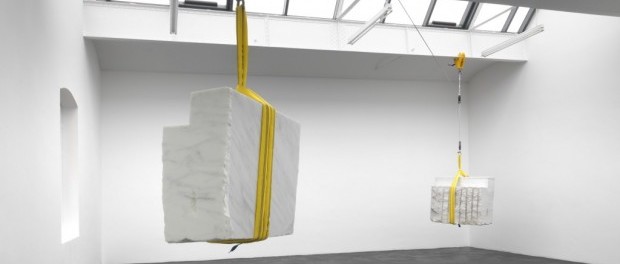Every Object has a Story: Infotainment, the Curator’s Wet Dream
Dieter Roelstraete, Manilow Senior Curator at the Museum of Contemporary Art Chicago, walks confidently to the front of the diverse audience and settles at a table in front of an open MacBookPro. Dressed in a light grey suit, pale blue shirt and sporting glasses, he starts the evening with a round of jokes aimed at himself. Sustained colourful laughter is his cue to get down to business.
In a pragmatic voice, the curator classifies the trend of research in art as a relatively new phenomenon. To prove his point, he mentions how “books are often conspicuously absent” in the studios of the great masters of yore, such as Picasso or Pollack. Pictures of both studios flash on the giant screen. Black and white piles of canvas, spilled paint and easels dominate the images. Not a book in sight. Art, claims Roelstraete, was viewed as a matter of intuition and spiritualism with almost magical properties. Research was ridiculed as the domain of scientists, white coats, and the dreaded enemy of creative expression. The BIG QUESTION, a perennial staple of such events, looms closer and closer.
And there it is: in stark contrast to their predecessors, today’s artist studio is indistinguishable from a library. How did such a change occur ?
Roelstraete traces it back to a switch in the modern economy. Capitalism and the age of information created an environment where entertainment, such as art, expanded its function. Information sharing was added to art’s age old purpose of providing an agreeable distraction. In Roelstraete’s own terms, entertainment suddenly became… infotainment.
Modern capitalism also provided artists with a new source of inspiration: travel. As it happens, cheap air fares enabled them to go on a global muse-searching quest, a feat, if not impossible, at least extremely difficult before.
As he is speaking, though, the audience senses his uneasiness with this method of working. Hoping to quell such an atmosphere, he addresses his objections fleetingly, mentioning something about the limits of research in art. This briefness, however, only has the effect of intriguing audience members even more. A brown-haired thin man inquires about the nature of these specific limits during question period. Roelstraete, however, seems bent on avoiding discussing this issue and embarks on a lengthy tangent about how artists like alternative histories. Two other people repeat the same question. After a lot of hesitation, he admits that, while research based projects are a “curator’s wet dream”, they are a delicate balancing act.
For instance, he explains that the instrumentalization of social issues that often occurs in such work can be harmful. To emphasize how much he hates it, he states bluntly that if an artist really wanted to provoke social change, it would be more productive for him or her to directly engage in the cause than to make art about it. His other issue comes from the fact that structured research comes at the expense of artistic freedom. Research in art has to continually balance on a sharp knife between spontaneity and rigidity for maximal effect.
This paradox, it turns out, is his personal source of fascination.
The Every Object Has a Story Max and Iris Stern Symposium took place at the Museum of Contemporary Art on march 27 and 28.






